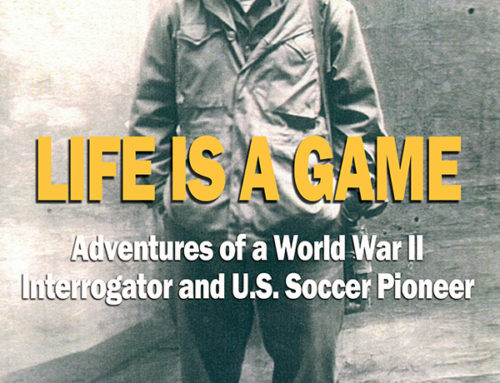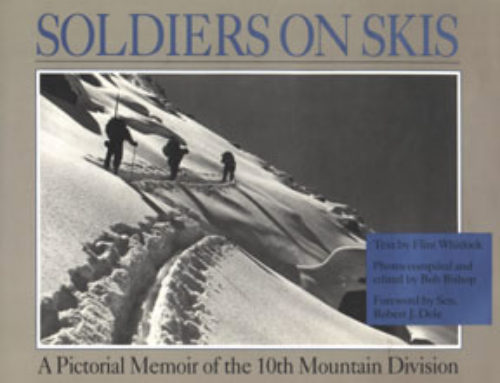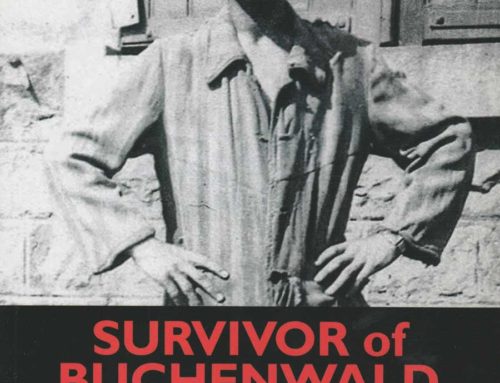The Untold Story of the Big Red One on D-Day
SYNOPSIS
In The Fighting First, Flint Whitlock goes behind the scenes of the biggest military operation of all time to tell the previously untold story of the famous 1st Infantry role in the D-Day invasion of France at Normandy on June 6, 1944. Using a variety of primary sources, official records, first-person interviews, and unpublished memoirs by the veterans themselves, Whitlock has crafted a riveting, gut-wrenching, personal story of courage under fire.
Operation Overlord, the invasion of France, was arguably the most important battle of World War II; Omaha Beach——where the 1st Division landed——was the hottest spot in the entire operation. Spearheading the amphibious assault on the “Easy Red” and “Fox Green” sectors of Omaha Beach, the battle-hardened 1st (the division had already seen plenty of action in North Africa and on Sicily) took heavy casualties in an operation where nearly everything went wrong. Only through acts of individual courage did the officers and men of “The Big Red One” the division from annihilation on the beach and the accomplish the unit’s mission.
The saga of the 1st Infantry Division did not end with Omaha Beach, however. Eleven months of bloody fighting still lay ahead as the division battled its way across France, into Belgium, and against a determined foe at Aachen, the Huertgen Forest, the Battle of the Bulge, and a hundred other “actions.” The Fighting First is an inspiring, graphic, and often heart-breaking story of young American heroes sacrificing everything for their country.
Despite the many differences, these modern warriors had one thing in common with Drake’s and Nelson’s intrepid men: They were going in harm’s way and they knew it. Many of them had but a few hours left to live, and those remaining hours would be filled with intense misery.
(from The Fighting First, ©copyright 1994 by Flint Whitlock)
Take a front-row seat at Omaha Beach in this knuckle-gripping drama written with an expert’s knowledge and a veteran’s insight. Flint Whitlock has done the work that has to be done to tell a story that must be told.
Craig Nelson, author of The First Heroes:
The Extraordinary Story of the Doolittle Raid.
Exploiting his extensive research into the uniquely rich primary sources
of the U.S. Army Military History Institute, Flint Whitlock has created a fresh and insightful account of the D-Day chaos on Omaha Beach and the determined courage that propelled the First Infantry Division into the hedgerows and across Europe. MHI’s motto is ‘We tell the Army’s story, one soldier at a time,’ and Flint Whitlock has done the same for the Big Red One.
Dr. Conrad C. Crane, Director, U.S. Army Military History Institute
In giving the men of the 1st Infantry Division their long overdue D-Day
accolade, Flint Whitlock has captured the heroism and horror of combat in equal measure. A writer of superb and proven ability, he supplies new insights concerning the role of the Big Red One on June 6, 1944. Crisp and captivating, The Fighting First stands as a signal contribution to the written history of World War II and a fitting tribute to those who made that history.
Michael E. Haskew, Editor, WWII History magazine
From the book’s opening words, Flint Whitlock sweeps the reader into his
compelling narrative of a group of men who braved incredible dangers to
help bring down the Nazi regime. His descriptions of the Normandy invasion match the visual images recalled from Saving Private Ryan, and they leave the reader anxious to learn more about the Big Red One. Whitlock does not disappoint, as he continues the story through to war’s end.
John F. Wukovits, author of Pacific Alamo: The Battle for Wake Island
A riveting and well-researched history…. Drawing upon official records, interviews, and unpublished memoirs, Whitlock has created a chronicle of courage and sacrifice under fire that is human and powerful…. A literate and rewarding tribute to a tough, swaggering legend.
Michael D. Hull, Army magazine
This is one helluva book. Don’t miss it!
KilroyWasHere.org
Whitlock tells a story within the story by focusing on the 1st Infantry
Division…Touches on many of the mistakes and obstacles of the battle plan…Compelling reading.
USA Today
You come away from this book amazed and thankful that any survived to tell it…One of the best non-fiction books of 2004.
Rocky Mountain News
Whitlock writes well; one is able to sense the utter fear of men knowing
they may be facing almost instant death–even when the men are
battle-hardened veterans of the earlier Italian campaign.
Library Journal
Truly great. Despite the complex scenario, the author follows the hardships on Omaha beach logically in a manner that is easy to follow. The best part of the book were Whitlock’s descriptions of Medal of Honor recipient actions. Great read, if you enjoy books on WWII you should find a copy of this.
(On-line review)
When I met my wife, her grandfather was already in the late stages of Alzheimers. He could barely remember who he was, let alone share the millions of stories he must have had locked away in his mind. After his death, I wanted to know more about what he had seen and lived so I started reading just about anything I could on the 1st Infantry Division.
I found this book shortly before the 60th Anniversary of D-Day and read it non-stop. The book is largely a collection of interviews and letters from the soldiers themselves. The stories are fascinating, heartfelt, and harrowing. I saw many personal accounts from his unit (18th Regiment, 1st Infantry Division) and started to get an idea of the hell this man lived. I even learned that one of the company commanders interviewed in the book was the grandfather of one of my old childhood friends. I had hoped to learn a lot from this book, but I got much much more.
dfarland (on-line review)
Despite the misleading title, the details of this book go far before and beyond the d-day invasion. a fantastic read for any WWII history buff!
Frederick L. Campbell (on-line reviewer)
My dad, Donald Gurdison, a 5th Engineering Special Brigade soldier, landed with the 1st Divison on D-Day in the 5th wave. There are special monuments for these two units on Omaha Beach just outside the side gate of the American Cemetery fence. This book filled in the gaps of the story after my visit. And I recognized many of the names from the exhibits. If you’re heading to Normandy and you can, read this first. It’s a wonderful account of some very brave people who saw the atrocities of war and served our country proudly.
Donna Coulson (on-line reviewer)
5500 Central Avenue
Boulder, CO 80301-2877
(303) 444-3541
ISBN 0-8133-33997 Price: $27.50 (hardcover)






